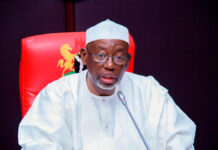Throughout history, Muslim caliphs and rulers responsible for Makkah, Islam’s holiest city, have gone to great lengths to guard, expand and care for the Grand Mosque.
“The Grand Mosque is the place to which Muslims all over the world turn their faces when starting their prayers, so it was the focus of interest of sultans, kings, princes, leaders and even wealthy Muslim people,” said Dr. Aminah Jalal, a professor of history at Umm Al-Qura University.
“They provided all financial support for the restoration and renovation of the mosque. Religious sentiments motivated them to send donations throughout the Islamic ages, as well as providing the workers and building materials necessary to take care of this blessed mosque.”
In days gone by, leaders also ordered wells to be dug and roads paved to make the journey to the holy sites easier for pilgrims, she added, but in the Saudi era, their efforts have reached a new level.
“The contributions of Saudi leaders in expanding and taking care of the mosque are beyond any comparison,” said Jalal.
Rashidun caliphate
According to a report by the General Presidency for the Affairs of the Two Holy Mosques, the Grand Mosque was surrounded by houses from the time of Prophet Ibrahim until the rule of the second Muslim caliph, Umar ibn Al-Khattab. He bought the neighboring properties so that the circumambulation area could be expanded. He also ordered a nearly 2-meter high wall to be built around the space.
As the number of worshippers increased, more space was needed, and the mosque was extended during the reign of Uthman ibn Affan, the third Muslim caliph, in 647. The number of people using the mosque continued to grow, and 38 years later it was expanded again by Caliph Abdullah ibn Al-Zubayr. He also rebuilt the Kaaba after the structure was damaged.

Umayyad caliphate
Two further expansions took place during the rules of the fifth Umayyad caliph, Abdul-Malik bin Marwan, and his son, Al-Waleed bin Abdul-Malik.
Abbasid caliphate
According to the General Presidency report: “The mosque also (underwent) expansions during the time of the Abbasid Caliphate, as the Muslims’ 20th caliph, Abu Jaafar Al-Mansour, ordered a little enlargement to the north side. A minaret on the eastern side of the mosque was also built.”
The largest expansion project of this era was ordered sometime around the year 783 by third Abbasid caliph, Mohammed Al-Mahdi, who expanded the Grand Mosque after acquiring neighboring houses and demolishing them.
He died in 785, before the project was completed, so his son and successor as caliph, Musa, took over supervision of the project, which increased the size of the mosque by 12,512 square meters.
For the next 810 years, the Grand Mosque remained largely unchanged, with only restoration work taking place.
Ottoman reign
In the early 1570s, Ottoman caliphs Sultan Selim Khan and his son, Murad Khan, oversaw renovation and restoration works that included the replacement of the mosque’s flat, wooden roof with domes. They also installed additional columns to support the roof, and a stone arcade was added. The size of the mosque grew to 28,003 square meters.
Saudi era
Despite the impressive work of rulers throughout history to expand and care for the Grand Mosque, the incredible achievements of the Saudi kings took the custodianship of the holiest site in the Islamic world to a new level.
When King Abdul Aziz united the country and founded Saudi Arabia, he made the Two Holy Mosques a top priority and ensured they received special attention.
In 1926, he ordered a complete renovation to the Grand Mosque, including a directive to cover the entire floor with marble. A year later, according to the General Presidency, he ordered marquees to be erected at the Mataf (circumambulation space) to protect worshippers from the heat of the sun. He also ordered the Masa (the area between Safa and Marwah along which pilgrims walk in what is known as Saee) to be paved with stone for the first time.
In 1928, he ordered the establishment of a Kiswah factory to manufacture the cloth that covers the Kaaba. He even made it a condition in his will that his sons continue to expand the Grand Mosque in anticipation of the increasing numbers of pilgrims.
When his son, King Saud became monarch, the Grand Mosque covered approximately 28,000 square meters. In 1955, he launched a long-term expansion project that continued for nearly 10 years. The size of the Masa was increased, and an underground area and another floor were added.
 Saud’s successor, King Faisal continued the expansion and development work. The building surrounding the Maqam Ibrahim was removed to provide more space for worshippers while circumambulating the Kaaba.
Saud’s successor, King Faisal continued the expansion and development work. The building surrounding the Maqam Ibrahim was removed to provide more space for worshippers while circumambulating the Kaaba.
After King Khalid took over in 1975, the Mataf area was expanded and the stone pavement of the Masa was replaced with Greek, heat-resistant marble so that worshippers could circle the Kaaba more comfortably, especially at noon.
On Sept. 14, 1988, King Fahd laid the foundation stone for the largest expansion of the Grand Mosque in 14 centuries. The project increased its size to 356,000 square meters, enough space for up to 1.5 million worshippers to comfortably perform their rituals. In addition, two minarets were added to the existing seven.
The sixth Saudi leader, King Abdullah, who took the throne in 2005, initiated another major expansion project, which included architectural, technical and security improvements. The capacity of the Mataf area was increased from about 50,000 people an hour to more than 130,000 to cope with the growing numbers of Hajj and Umrah pilgrims.
The total space covered by the Grand Mosque and its open areas and facilities increased to 750,000 square meters, at a total cost of more than SR80 billion ($21.3 billion).
In 2015, King Salman launched five major projects designed to allow the mosque to accommodate nearly 2 million worshippers on a 1.5-million-square-meter site. Neighboring properties worth billions of dollars were acquired to provide the land that was needed.
The projects included expansions of the main building, squares, pedestrian tunnels, central service station and the first ring road.
Directives were also issued to take advantage of space on all floors of the mosque to accommodate more worshippers at the Grand Mosque and enable them to perform Tawaf (circumambulation) conveniently.
The capacity of toilets and places for ablution was increased to 16,300.
Technological improvements to the Grand Mosque include escalators and lifts that operate around the clock, air conditioning, lighting, a sound system, video surveillance and a fire control system.
A report by the Ministry of Finance revealed that projects within the most recent, third Saudi expansion of the Grand Mosque, which began in 2008, included the development of the main building, Masa and Mataf, external squares, bridges, terraces, central services, service tunnels, hospital and pedestrian tunnels, transit stations and bridges, the ring road surrounding the mosque, and infrastructures such as power stations and water reservoirs.
In Aug. 2019, the Saudi Press Agency reported that a project to add more than 3,000 square meters of courtyard space near to the Grand Mosque was nearing completion. It was designed to increase the capacity of the mosque and its courtyards to provide the best possible service to Hajj and Umrah pilgrims, assist with crowd control and ensure the safety of visitors.
























